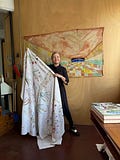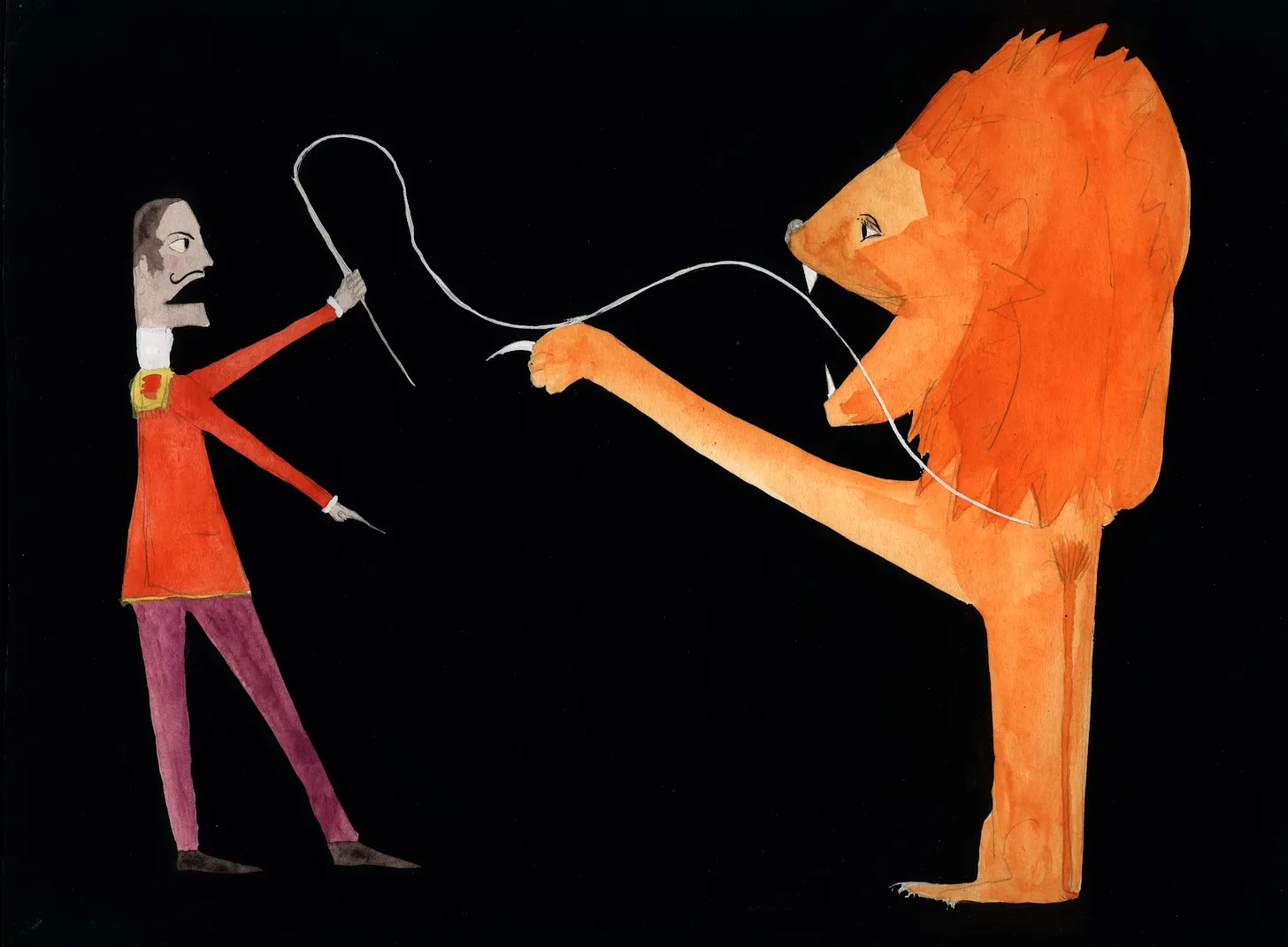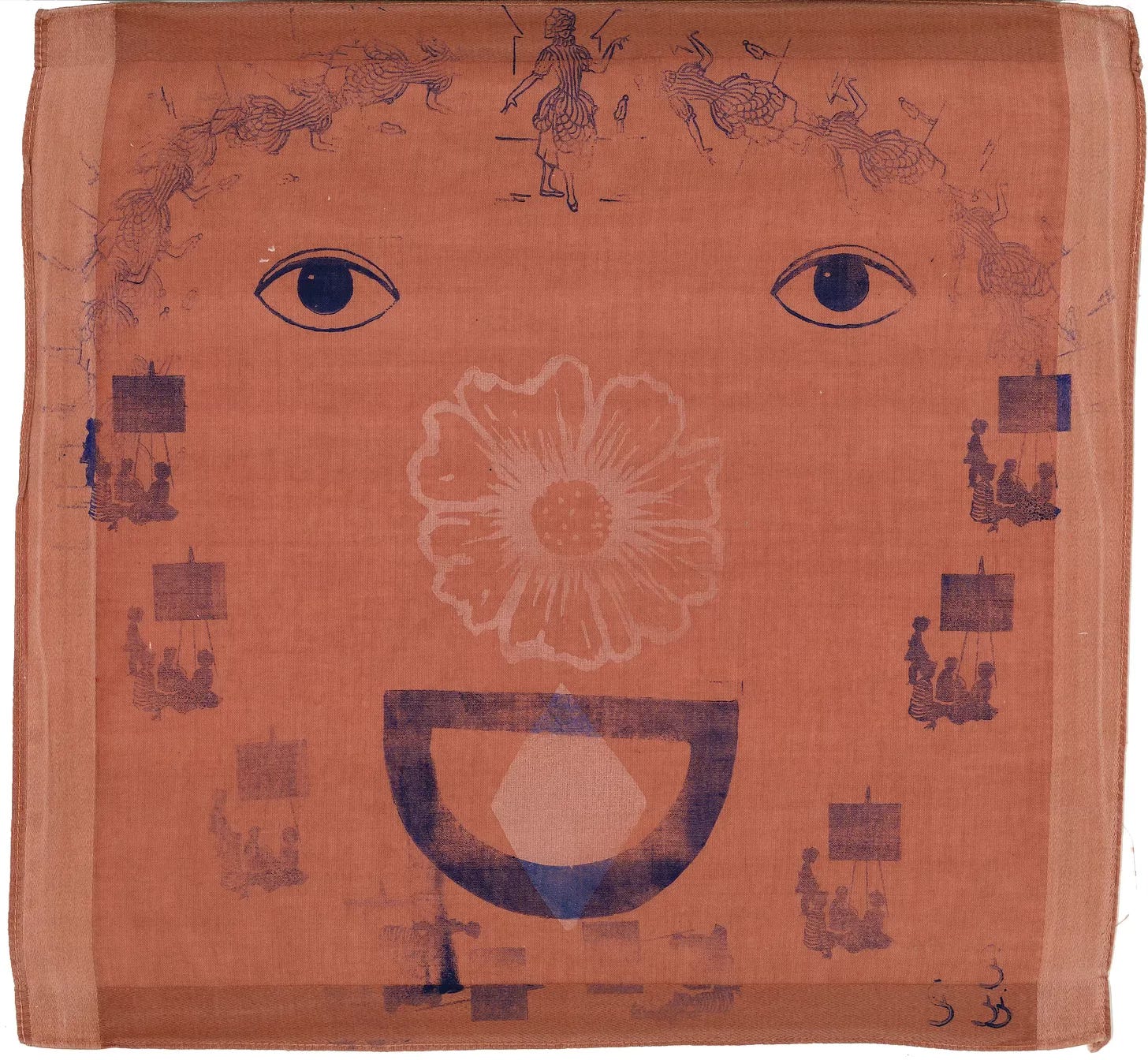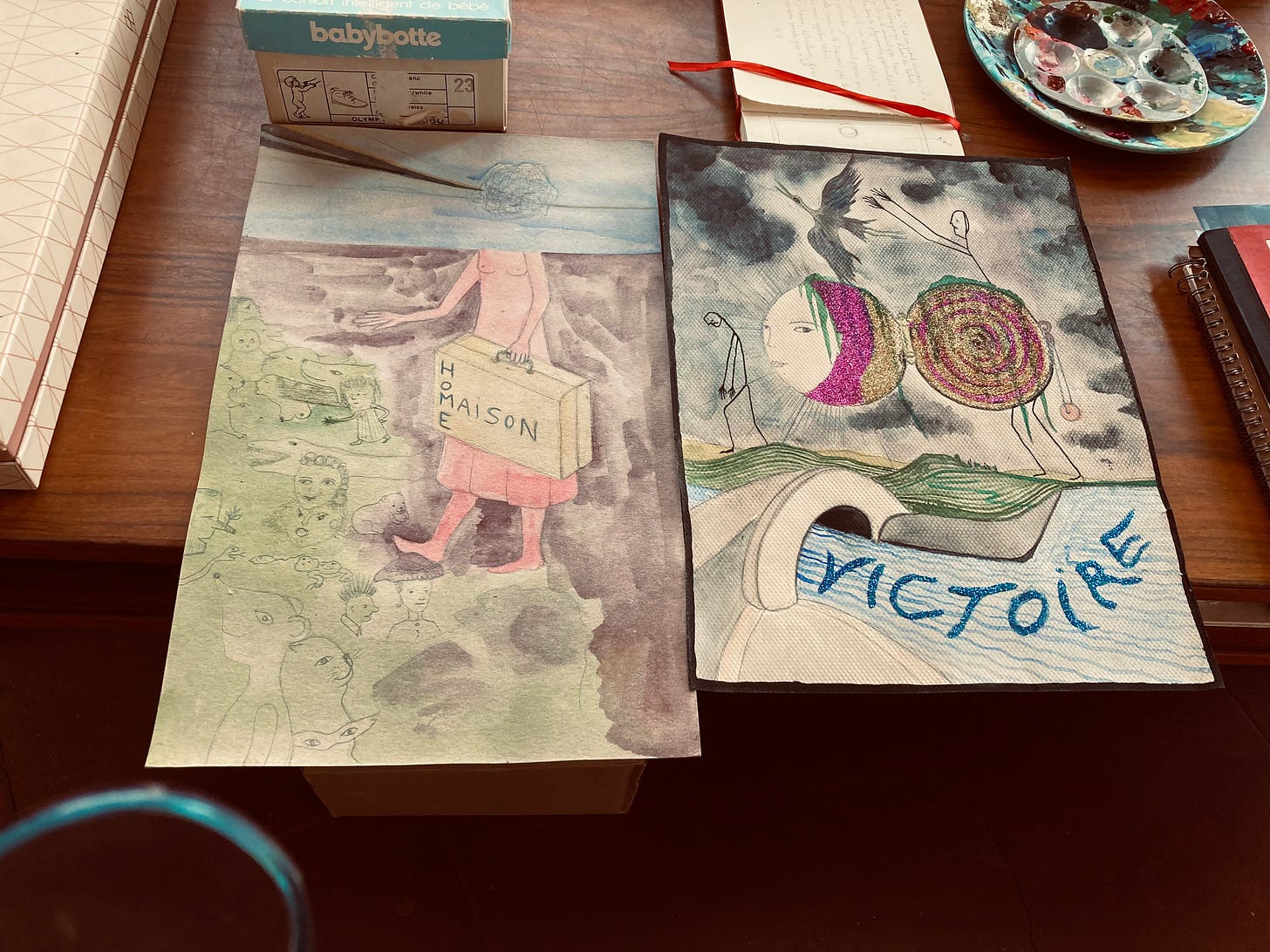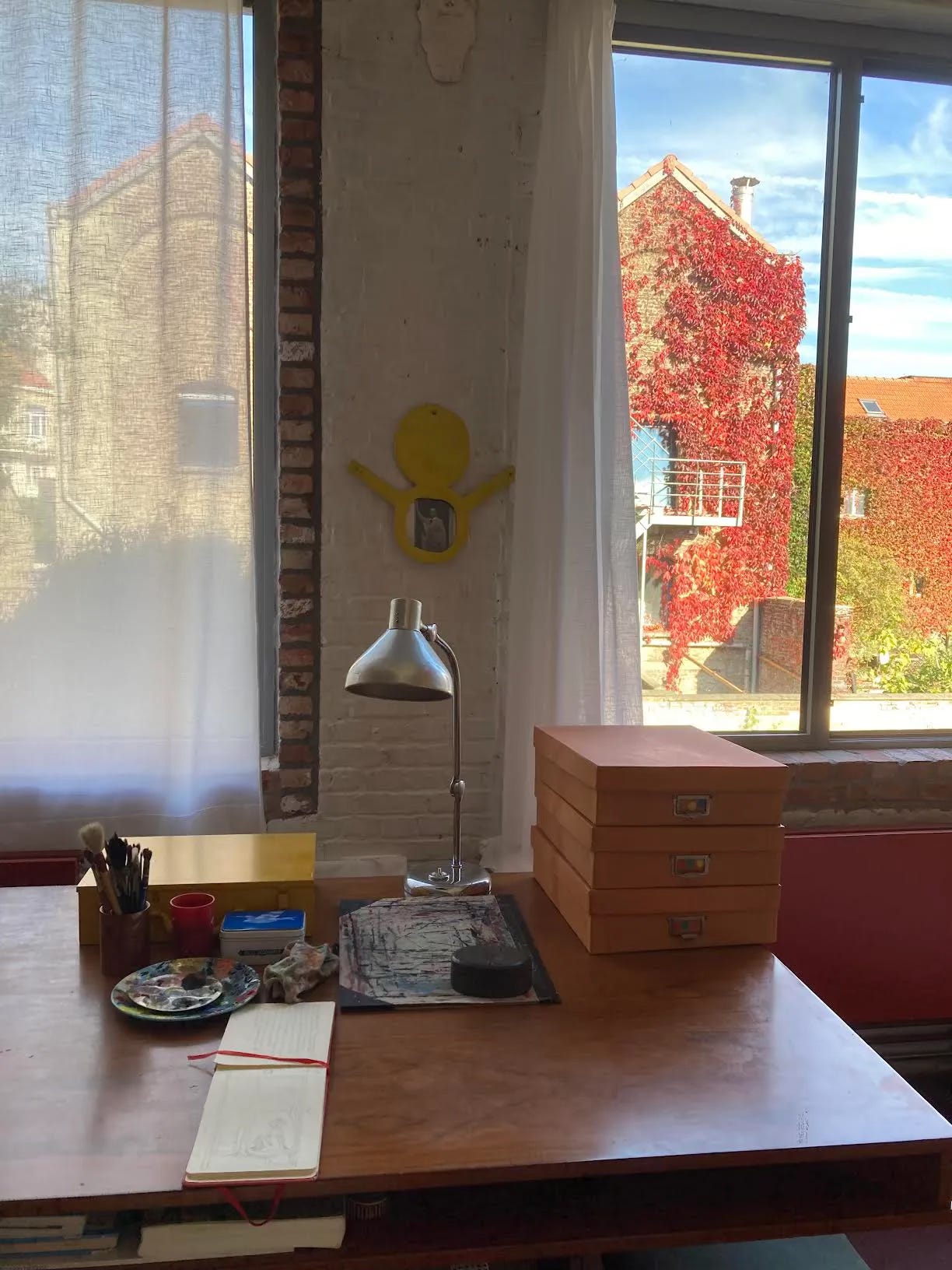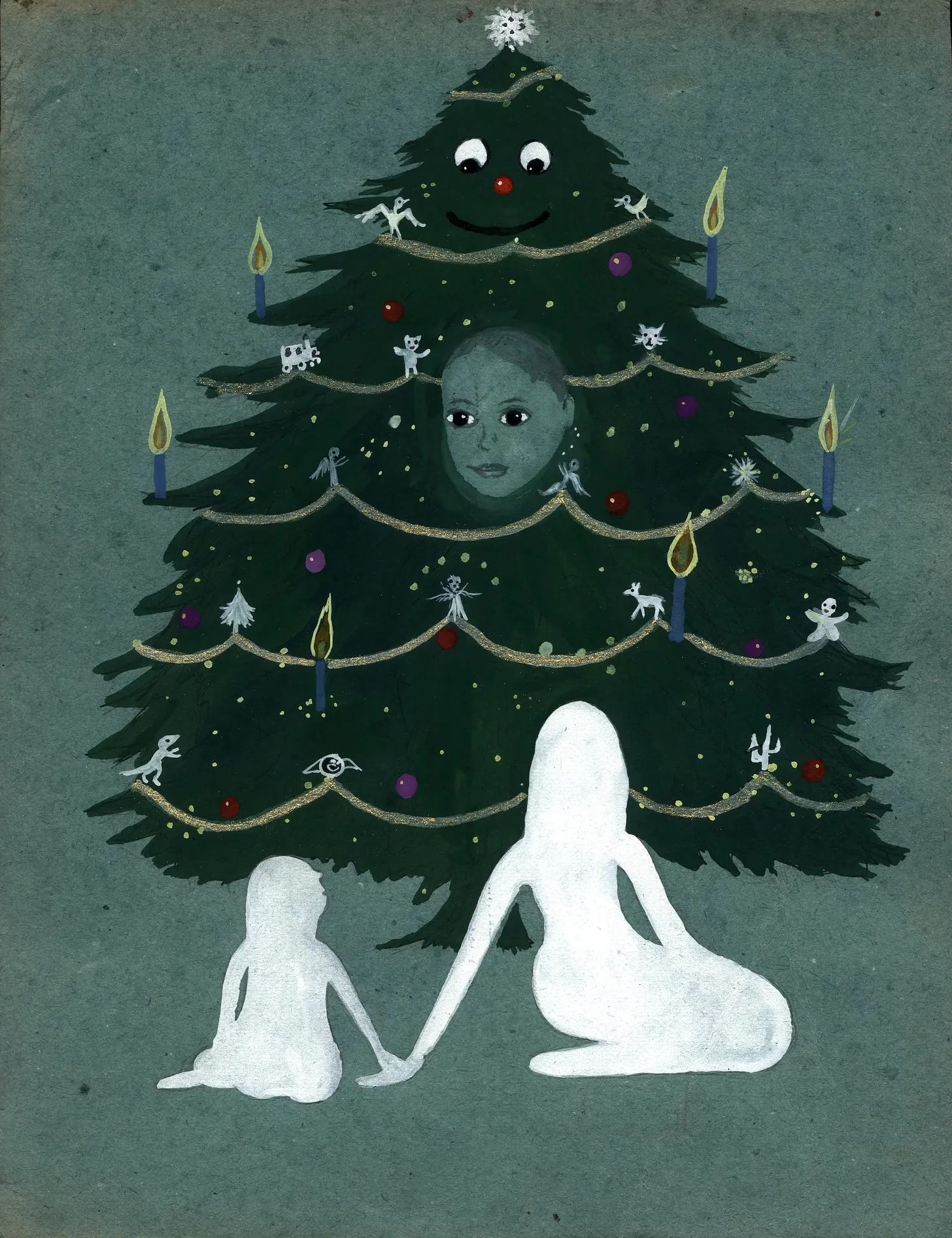Aurélie Salavert
"For me there are two very distinct moments: My daily time of contemplation and creation, and my inner life, the things I do in secret."
Aurélie Salavert graduated from the Ecole Supérieure des Beaux-Arts de Marseille in 1990. In 1992, she received a grant from the DRAC Provence-Alpes-Côte d'Azur - Ministry of Culture. Her work was featured in solo exhibitions at the Galerie Athanor in Marseille and The Calvet Museum in Avignon before she began her collaboration with Galerie Aliceday, Brussels (2008 - 2014). In her most recent exhibition, Aurélie joined renowned florist Thierry Boutemy in a collaborative installation, Hearts Up, at the Boutemy Atelier. A selection of her artworks were acquired for the permanent collections of the Fond Régional d'art Contemporain (Paris) and the Fond National d'art Contemporain (France).
Mepaintsme: I’m very interested in learning a bit about your background as an artist. Are you self-taught? Or did you study art formally?
AS: I am self-taught... although, I did a five-year course at the university d'Art de Marseille. I don't feel I have to make a choice to give an answer.
I grew up, for a long part of my childhood, in Provence, with my grandparents, who were peasant farmers. My grandmother created extraordinary and free embroidered work, and everyone else in my family was creative in one way or another, through drawing, passion for literature, history, cinema, politics, cooking, and a thousand other things. There was a particular way of looking at nature, of simplicity and truth. I am grateful for all of this.
My studies at art school, of course, led me to new ideas and practices — taking theoretical courses in the history of art, meeting with guest artists from the contemporary scene, developing multiple workshop practices...swimming in the coves with friends, partying, visiting exhibitions, museums, reading, traveling...
Here, in a few words, are my memories.
To this day, I maintain the impression that our personalities as young artists are able to develop while keeping their singular voice.
MPM: In many ways your work defies categorization, gently shifting between tenderness, darkness, humor, sexuality and mysticality. It is difficult to pin down. Would you agree that your work's elusivity is part of its power?
AS: I can only clearly grasp one form of what I'm trying to do. What I see is a great canal, called “astonishment”, and within it, a multitude of canals, each one carrying a different voice.
I balance as best I can between them all.
MPM: I feel your work has a certain spiritual kinship with children's book illustrators like Jean de Brunhoff, Hergé and Leopold Chauveau. Has book illustration had an impact on you as an artist?
AS: I am in awe of many different things. Some children's books are part of it. I don't understand why, most of the time, we classify images for children or adults... The books of my childhood are part of my inner pantheon and have shaped who I am. In new books that I read now, I continue to find wonders. When I was a child, I had the feeling that the adult world was extremely complex and that I would never be able to understand it, and that I'd never be able to reach it... Today, I take refuge in one of the clearings of my life, which is my artistic practice; to survive in the face of awareness of the world’s violence.
It is a way of praying, of resisting.

MPM: When looking at an artist's entire body of work I try to understand the connective tissue from one work to the next. I keep coming back to the word imaginativeness. Do you think above all else the human imagination is the animating force behind your work?
AS: Yes. I hadn't thought about it that way because my imagination is embodied in my reality. It's something mysterious. Images appear in my mind.
MPM: I sense this merging of fantasy and reality in your work. Can you talk a bit about your practice and how it might be informed by your daily life? For many artists, creating work is very tied to a studio schedule, yet your allegories feel as if they could be inspired spontaneously throughout a normal day's thoughts or activities such as a walking, friendly conversation, eating dessert, putting on makeup, leisure etc.. For you, does art and life blend into one another?
AS: Most of my drawings appear in my mind in moments of solitude, often when I am in the silence of my room. I do not request this state. It happens naturally, a vision. Sometimes something real marks my attention with a particular flavor and in the same way, I recognize it. I make a drawing like a note in a notebook. I trace all the elements that I’ve seen, and often the colors, too. I do this if I can't realize my drawing quickly, as a memo. Many of my drawings are small formats and the whole first phase, that is to say the pencil drawing, is done by hand, in my bed.
In this way, I feel like I have two studio desks at home - one in my bedroom and the other in my studio. Of course, when I use gouache, for example, or when I feel the need to do more large formats, this is done in my studio. I never have a moment where I enter my studio wondering what I'm going to do. My life and my art go hand in hand.
MPM: I understand that alongside art you practice Zazen Meditation and follow the teachings of Roland Yuno Rech, from whom you received an ordination as a nun. In what ways do you feel your spiritual practices have informed your artwork?
AS: I discovered Zen when I was in my twenties. It was a momentous encounter in my life. When you are very young, like many people, I think, you imagine your life... Through this practice, I was able to capture the present moment. It is very difficult to put this into words. It is a concrete experience, physical and mental. It transformed my inner being and therefore my art. A thing appears in the mind, then disappears, like clouds in the sky... look without holding back.
MPM: Does the notion of being in the present moment include the decision not to date your work?
AS: Quite! In what I do, for me, there is no notion of time, period, series, progression, regression, value, judgment... I see it as loops that come back on themselves, while differentiating themselves. A drawing for itself that gives birth to another. I rarely look at what I have done in the past and I don't know what I will do tomorrow or at least how I will actually approach it. That's what surprises me, what brings me joy.
MPM: There are many things about your work that are personally meaningful, such as working on discarded grounds or displaying works unframed and pinned to the wall, with those ‘pinholes’ becoming integral to the piece. Would you describe this as a personal philosophy?
AS: The choice of support matters a lot. My stock is made up of old papers, old book covers, cardboard packaging from food products, and so on. I have some new papers, also, because I don't make it an automatic aesthetic system. I have a taste for economy in this area and I love the idea of being able to continue indefinitely, with little. I carefully choose the support according to the drawing I want to make. I'm obsessed with storage. I don't want to feel overwhelmed by my work. If all my drawings were framed, it would be a complete nightmare! I want to travel as light as possible in my life and be able to continue anywhere... not to leave a huge material mass behind me. Even my large formats on canvas or paper can be rolled up.
MPM: I've noticed how experimentation is also important to your work. For your 2023 exhibition The Secret Garden you created a short animation to accompany the show. For Hearts Up you collaborated with a renowned florist, Thierry Boutemy, in a collaborative installation at the Boutemy Atelier. I’ve also enjoyed a number of short digital animations with music in your Instagram Highlights. Are these types of explorations confined to purely visual mediums? Have you composed music or written poetry as well?
AS: During any project: a publication, an invitation card, a poster, an exhibition, a collaboration, an animation, an Instagram musical story... is a place where I like to experiment with other fields of creation. I like, for example, to think of an exhibition space as a sculptural element, and not just a place to hang my works. Structuring the space with furniture, flowers, fabrics, lights, emptiness...
Play.
I write a poem or text for a publication, and dream up titles. I have no real or formal academic dexterity in anything, and I'm okay with that. Almost everything I do requires a considerable effort of concentration, so I am always surprised when I finish something. I feel like an old child.
MPM: You are one of the few artists I know who have an important emotional connection to Christmas, and this subject often finds its way into your work. What is it about Christmas that you can tell us that is so meaningful to you?
AS: It is very sensitive of you to have perceived it. There are several reasons. I was born on Christmas Day and in Provence, where I grew up, Christmas is very important, even though my family is not Christian. I cannot describe here all the traditions — it would take too long — but here is an essential one: On the evening of December 24, shepherds, women in Provencal costume, musicians, children dressed as angels, and a cart decorated with holly and candles pulled by a ram and containing a lamb symbolizing the baby Jesus are gathered in the heart of the church. There is also a small reconstruction of the manger in a stable representing the nativity scene. The age-old songs are in the Provençal language. It is a unique moment in the year and in the world. It's part of my deepest roots, that's why it's important to me. More than just a Christian holiday, I see the birth of a child the birth of every Being who comes into the world, the memory and welcome of a first day to be celebrated forever.
Aurélie Salavert’s work is currently on view in the online group exhibition, Slices, at mepaintsme.com.
More of her work can be viewed at the following links:


